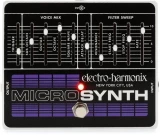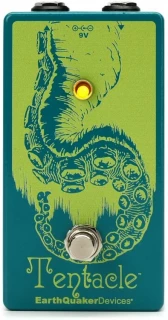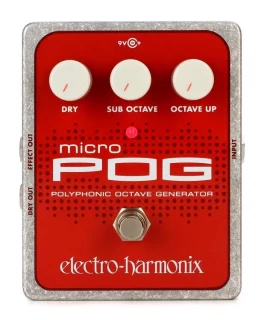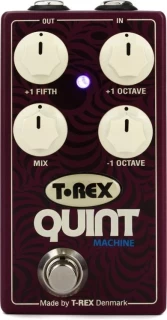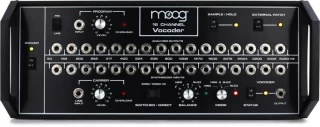Micro Synthesizer Analog Guitar Microsynth Pedal Review
Featured Deal
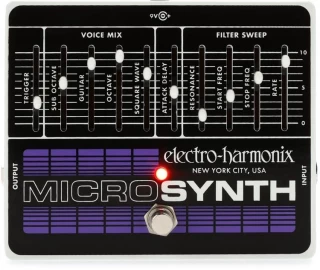
From $324.80
Get DealMicro Synthesizer Analog Guitar Microsynth Pedal
Analog Synth for Guitar with 10 Sliders, Four Voices, and Power Adapter
$324.80
$227.36
$292.32
Micro Synthesizer Analog Guitar Microsynth Pedal For Sale
Most Popular Harmony Pedals & Processors
Tentacle V2 Analog Octave Up Pedal
Analog Octave-up Stompbox Guitar Effect with Flexi-Switch for Momentary or Latching Operation read more
TA-1VP Vocal Processor with Antares Auto-Tune Evo
Vocal Processor with Auto-Tune Evo Pitch-correction, Microphone Modeling, Compression, and Equalization read more
Micro POG Polyphonic Octave Generator Pedal
Polyphonic Octave Generator Pedal with One Octave Up, One Octave Down, Dry... read more
Quint Machine Four-tone Generator Pedal
Pitch Effects Pedal for Electric Guitar with Octave Up, Octave Down, and... read more
Vocoder 16-Channel Vocoder
16-channel Vocoder with Sample/Hold, External Patch, Hiss & Buzz Effects read more
Specifications |
|||
|---|---|---|---|
| Brand | Electro-Harmonix | ||
| Category | Harmony Pedals & Processors | ||
| Pedal Type: | Guitar Synth, | ||
| Inputs: | 1 x 1/4", | ||
| Outputs: | 1 x 1/4", | ||
| Power Source: | 9V DC power supply (included), | ||
| Height: | 3.5", | ||
| Width: | 8", | ||
| Depth: | 7", | ||
| Weight: | 2 lbs., | ||
| Manufacturer Part Number: | MICRO, | ||
Daily Deals
Micro Synthesizer Analog Guitar Microsynth Pedal Reviews
Sick synth
Really versatile pedal responds great to your touch and feel. Gives you the ability to dial in various settings to classic synths and more.
And now for something completely different...
I've been using this for a few months now, and I have to admit, it's a pretty cool and versatile pedal. Especially if you do a lot of composition, this is one of those pieces that can take you down a whole new road. I think EXH did a good job of blending user-friendliness with what you'd want out of a synth pedal. The layout is very straightforward, and it gives you just enough… read more flexibility to extract some classic synth tones that, to my non-synth player ears, sound pretty genuine. In addition to the variety of synth sounds you can get, this pedal works reasonably well at turning your electric into a bass guitar, which is just icing on the cake. As with any analog pitch-shifting pedal, one of the biggest drawbacks is tracking. This one does a decent job of it, but you still can't sustain notes for very long without the pedal losing track and wobbling off into oblivion. The square wave and octave (to a lesser extent) sliders actually takes chords pretty well, but not surprisingly, the sub-octave function goes nuts if you play more than two notes simultaneously. Despite it's simple layout, this pedal also takes a little while to get to know. it is VERY sensitive to a few things including where you place the sliders, your picking attack, pickup setting, and where you're playing on the fretboard. Alter any of these things even slightly, and you run the risk of either getting a tone you didn't expect or an entirely different volume. Placing a compressor before the pedal helps with sustain and giving you a more even response, but in my experience, it can also drain some of the punch. All that is to say, you just need to be very precise with this pedal when playing live. The only other thing I'd say about the micro synth is that it's probably not worth buying if you're not looking for something "out there." This doesn't really have a place in a typical rock guitar setup, and if that's what you play, you probably won't get very many opportunities to use it. On the other hand, if you're looking for a new sound in the area of MUSE, or a creative tool that will take your playing somewhere new, this might be just what you're looking for.
Micro Synthesizer Analog Guitar Microsynth Pedal Questions and Answers
No Questions Yet.



